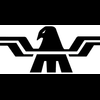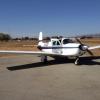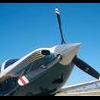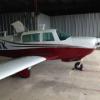Leaderboard
Popular Content
Showing content with the highest reputation on 07/22/2017 in all areas
-
Yes very much worth getting the 540. One note on the IFD100. It will only support features supported by the connected unit. In other words when connected to a 440 it will not support IFR charts since the 440 doesn't support charts. But the 540 does, and so the 100 will also support charts when connected to a 540.3 points
-
At our last annual we had to do some tank work which means the old wing walk had to come off. I’ve done this a couple of times and have made some handy discoveries I thought I would pass on hoping it will be of some help. I’m going to include pictures, hopefully in the right order. Before you begin this project order the wing walk paint. I’ve always used Randolf but I’ve learned a trick. Don't thin it out. When my can arrives I turn it upside down for a week or two. It will come in a plastic bag so just leave it in the bag in case it leaks, which mine has never done. The grit at the bottom of the can is hard to deal with and this method, though slower, really pays off. Leave it upside down until the grit has shifted to what is now the top of the can. You can feel the change in the can when it does but it takes a while. That’s why you order the wing walk first and do the next part later. Patience will pay off later. I start by using aluminum foil tape I get at Home Depot. Not sure why this works so well for this project but it does. The tape needs to have clean edges, not dented or damaged. I carefully place the tape outside the existing wing walk and make sure I use ample plastic to catch any drips. I’m also careful to press down the edges of the tape making sure there are no wrinkles. You want a good clean seal on the edge of the tape. Now that I have the wing walk area masked off it’s time for the stripper. I use Citristrip. One small bottle is all you will need. Using a disposable brush I apply a thick coat all over the old wing walk. The trick to this step is that you do not want the stripper drying out. After a thick coat is applied I cover it with Saran Wrap and carefully press it down over the goop. Then I double check that none of it is, or will, drip off the boundaries of the aluminum tape onto any paint I want to keep. Now is when you walk away and leave it overnight. The next day use a plastic spatula to scrape it all off being careful to not drip it on any paint you want to keep. You’ll be amazed at how well it works and there’s no fumes. I dump mine into a small box and throw it out. Using damp paper towels I carefully wash off the residue being certain not to create any runoff. Once I know it’s clean I use a solvent on it just to be sure. If you want to use Alodine and AlumaPrep now is the time. I take off the tape and clean it again paying careful attention to the edges of the tape. Hopefully you’ll get a nice clean stripped line like I do every time. I’ve never had any stripper get under the aluminum tape. Now it’s time to re-tape the area just like before and prep it for wing walk. I place the tape just barely over the paint line so I’m sure I get clean coverage. Here’s where turning the can pays off. Open the can and start chopping up the grit blob with the paint stir stick. This process is so much faster when the blob is at the top of the can opposed to all the grit being stuck to the bottom. Keep chopping and stirring. Wearing a work apron and safety glasses would be smart in case some of it jumps out of the can. Chop and stir, chop and stir. I apply the wing walk using a 4” foam roller and a disposable tray. The roller works much better than the brush which is the recommended method. Pour a little less than half of the wing walk into the tray. The trick is to keep it moving and mixed since the grit likes to settle fast. Apply evenly and watch for streaks. I apply two full coats and wait about 30-45 minutes between applications. After the second coat has dried for 30-45 minutes I remove the tape and plastic masking. Now is the time to be patient again. The last time I did this we waited for 3-4 days to be sure it was hardened and then we went flying. In the hot Redding sun a passenger turned his heal on the wing walk and it must not have hardened enough and created a small divot. Your results may vary but this time I am waiting a week to ten days before using it. I do not have pictures of the full process but I have enough it should make sense. -Sven2 points
-
So today I embarked on my first flight out to the small town of Alpine, TX for a well crafted cappuccino. Specifically, the Cedar Coffee supply. Alpine is a great stop for those needing a traveling break! During the initial flight, I had about 135 Knots over the ground at 8000' and about 9 gph. On the return, I enjoyed 7.5 gph at 11,000' at an average of 147 knots over the ground. I'm beginning to see why the 4 cylinder engine has such a following! My only quirks were the Apollo gx60. Super complicated and unnecessarily difficult. I only ended up using it as a 2nd com and filed /U while monitoring my iPhone's foreflight map when I could catch service. For now I think I'll look to catch either a 1st gen stratus or maybe a used 2nd gen to connect foreflight to in order to monitor gps, weather and traffic. Attached are a few photos from today. Thanks for the help. Sent from my iPhone using Tapatalk2 points
-
Hi Filippo, I’ll take a stab at this from my Bravo experience, I have also written a bit about that engine and myths and truths about its power setting in my BLOG that you might find helpful as a new owner. And, without further adieu - congratulations on your new aircraft. 1) MP at full throttle during takeoff is a function of the turbo controller system and is critical as far as adjustment is concerned; 34.5” is likely a bit low unless its super cold where you are. The density controller must be adjusted to produce a maximum MP based on inlet air temperature (IAT which is after the intercooler) with a heat soaked engine at full throttle on a static run-up. Too many people think that since the POH says MP max is 38” that they should have that on the roll - nothing could be further from the truth. Even on a hot day, an AF1B at 38” is way over max power. While this won’t necessarily instantly destroy your engine, you are over boosting and causing unnecessary stress, wear and tear. Most owners do not have a way to measure the compressor discharge or inlet air temp, so you don’t know for sure if your max static MP is correct. Most AF1B run an IAT of ~120dF so the setup chart from lycoming puts MP at static runup in the range of 35.5 - 36.0. That said, being an inch low is not a reason to run out inconveniently and have it adjusted, but have it looked at at the next maintenance or annual. (see LYC Service Instruction 1187J, I included the chart below) 2) Oil pressure varies for a bunch of reasons, most notably temperate vs viscosity. What you are seeing is not alarming, but does beg a few questions: How old is the engine (older engines showing wear will often have a drop in OP as they heat up for myriad reasons, 2) What type of oil are you running? (multi weight vs straight weight - I like AeroShell w100 in the summer in my bravo and WC20-50 in the winter) 3) Do you keep the oil 10 QTs or do you run the engine below that. In the end, as long as the oil temp is remaining within range you should not have any problems with oil pressures as low as 40’s from the engines point of view. I would however have the oil pressure relief valve looked at next maintenance to make sure nothing is sticking or gummed up. 3) The boost pump comes on based on throttle position - it has nothing to do with MP. Yes, the pump will come on as you advance the throttle to chase MP in the climb in your going high, it’s fine - that electric FP is designed for continuous operation if need be. (some aren’t). That said, I will refer back to #1 - proper adjustment of the density controller will affect the ability for the absolute pressure controller to regulate MP during ascents and descents so make sure that is adjusted correctly, and also make sure the roller switch on the throttle arm is adjusted correctly. Its intended purpose is to make sure the boost pump come on during “full throttle” position operations, like take off and go arounds. Hope this helped a bit! Dave2 points
-
IMO the ifd100 is not a replacement for the larger 540 unit. If cost is a major factor or you have a large panel with the radio stack all the way to the right the ifd100 is very useful. However, I do not feel it provides anything major beyond foreflight (upload capability to the panel).2 points
-
Sounds more like an acknowledgment that the flight plan had been received rather than the actual expected route.2 points
-
I have the AXP322 and love it. The more stuff in the tail the better for W&B. And I like the clean, uncluttered panel.2 points
-
2 points
-
So far great, it was great being able to bring it home . We did it very comfortably in 3 days with my wife flying no more than 4 hours on average per day. Enjoyed the scenery, the thunderstorms around the country , ranged from low to high density altitude airports.... just checking now with other mooney owners their experience on engine parameters to find out if an adjustment need to be made or not. Thanks again and happy to be a proud owner of a bravo, it was nice to be able to fly on average westbound at 178-189 TAS....2 points
-
Go for the remote transponder. I just installed a gtn750 with GTX345r. It adds that weight in the rear which helps. I keep hearing about how your transponder will be inop if the gps navigator quits. That's true but really, how reliable are these GPS units and if it fails, is a transponder failure that big of deal then?2 points
-
Dan and Robert talked about the wing tips this morning. Right now, we are too busy to take Chris out of the shop to do molds. So, they are just temporarily out of production. Chances are good we can be back up and running with these in a few months.2 points
-
2 points
-
Perhaps the FAA finally upgraded their computer from 1960 to 1995 era technology. Or the man in the box stayed at a holiday inn.2 points
-
The biggest difference is between the IFD440 and 540. I was at an Avidyne Seminar last weekend and everyone had the simulators and the IFD100 on their iPads. The guys on the 440's were struggling a little to keep up, but they were getting it done. The extra size of the 540/550 is well worth the difference in price. Unless it was a great deal it's hard to justify the 550 over the 540. By the way if you get a chance to ever take a Gary Reeves class on the Avidyne ifds, it is well worth it. www.AvidyneTraining.com1 point
-
Hi Fillipo Congrats on your purchase! While I am fortunate and can fly a lot of different Mooney's, the Bravo is one of my favorites. Truly a personal airliner with a lot of capabilities and a very stout dependable engine. I wouldnt fret too much about 34.5" on TO until you know the density controller isnt set up correctly with the IAT IAW the Lycoming SB. Looking at your engine monitor, I personally would run it a bit leaner <1600 TIT and with a bit less MP in cruise, but thats just me and what Bob Kromer suggested to me to maximize the engine life and what to pass on to my Bravo students. Its your engine now and you can fly it how hard you like. Your low oil pressure at cruise might indicate having the filter bypass spring pressure checked, and is also a function of your oil type. Your boost pump will come on relative to your MP (throttle) physical position. Mike Elliott Master CFII, N49FM, a 1999 Bravo EDIT - just read DVA's posts....What he said...Spot on Dave!1 point
-
To be fair he did mention the possibility of trusting them with a weedeater which is an absolute critical component of a well manicured lawn...1 point
-
I hope it is just the sensor. If so it will be a very easy fix. If not don't try to chase down the problem. 'Your current fuel sensors (2 per tank) are very accurate and you will not need the CIES sensors. The guages were in a great spot but almost impossible to find something that can fill the space. So yes @THill182 I agree that it is a very slippery slope and you can drop 40k very quickly before it's done. This is why you see a lot of forsale planes of this vintage with black tape on two or more guages (not something I'd recommend but it's your plane) Is it legal to have the old tach showing past redline even with a digital readout? edit: I absolutely enjoyed using the moritz guages for the past 15 years and tried my best to keep them going. However, every Mooney shop I talked to including Don said to move on when things go astray. So I did and now I'm getting everything ready for that 40k upgrade1 point
-
The worst ice is typically right at the tops, especially when the clouds have some vertical development.1 point
-
1 point
-
If you want to see a 100 Mooneys, meet a lot of fine people, and learn about all M-20 models, you can do no better than the Mooney Summit in Panama City. Don't miss it.1 point
-
1 point
-
Hi Rookie, assuming for a moment that your alternator and the regulator is operating correctly and that you do not indeed have a low voltage condition, it's not uncommon to see the lamps illuminate errantly due to one of two leaky diodes on the circuit board in the annunciation panel. I have a schematic somewhere, and it's not a difficult field repair. There are a few places that will work in those only oem boxes, maybe someone else can chime in.1 point
-
Here is some summer ice at 17000 last Friday. This took about 30 seconds to accumulate (sld?) and was right before I switched the TKS to max. Once on max, it cleared pretty easily. I was only in that for a few minutes. But if I had boots and not TKS, the stuff behind the leading edge would not have cleared so quickly for me. And no, I was not in a vertical climb The Acclaim climbs well, but not that well. Stupid sideways pictures1 point
-
I do have the KT76a I just couldn't remember what the letter was right off hand. But I think I'll go with the remote unit. Sent from my iPhone using Tapatalk1 point
-
That's exactly what happened. He emailed me to let me know that it sold outside of eBay. It was almost like he was gloating. I thanked him for letting me know and wished him good luck on the pre-buy process. Maybe he got someone who is completely clueless.1 point
-
Update. Took the MAGs in. Original MAGs (manufactured in 1986). Doesn't appear they have ever been serviced. Coils were bad; points shot; other components were bad too. Paul was right. Will get them reinstalled later today. Should have a significant impact on cold and hot starts! More costly than I hoped for, but not when you consider the alternative. Thanks again to all for the recommendations.1 point
-
The other "name brand" piezoelectric system emeds is used on certified airplanes. http://www.coxandco.com/products/low_power_ice_protection_systems.htm Honda jet, premier, hawker and a Boeing. You would think given the potentially low cost the experimental crowd would be all over it.1 point
-
This was a No Reserve Auction - meaning high bidder wins it at the end no matter what it's up to. So what does he do when it doesn't reach a price he likes? He just ends the auction. He'll probably make the excuse later that someone outside of Ebay bought it and then couldn't come up with the money. http://www.ebay.com/itm/93-MOONEY-TLS-BRAVO-1700-TT-ABSOLUTE-STEAL-NO-RESERVE-/122604328619?hash=item1c8bc996ab:g:0ioAAOSwo4pYf~Q9&vxp=mtr1 point
-
Listen: Amateur Radio Newsline report 2073 interview with Brian Lloyd 21July2017 http://projectameliaearhart.org/wp/wp-content/uploads/2017/07/A_R_Newsline_Report_2073_Brian_Lloyd_Interview_21July2017.mp3 If that doesn't work, try this:http://projectameliaearhart.org/a_r_newsline_report_2073_brian_lloyd_interview_21july2017/1 point
-
They work real well in reverse (pulling), forward (pushing) is C/G (center of gut) issue as traction goes out the window1 point
-
MS has a pretty good CFII that flies a Bravo. It may make some sense to get some time with him to answer the bazillion questions that are going to come up in the next week or two... Check in with Don Kaye, if that makes sense? How is it going so far? Best regards, -a-1 point
-
Moritz is always going to get some heat, because they went out of the business of supporting their instruments... But before we throw the baby out with the bath water, know that the EGT sensor is in one of the most harsh environments... First thing a PP would want to do... 1) identify where the EGT sensor is that services the ship's EGT gauge. The O has a separate thermocouple on one side of the engine after three exhaust streams come together... this is why the ship's gauge usually reads higher than the other six. Three exhaust pulses in the same time the others see one. All of them have an averaging function... 1a) The ship's EGT is a bit down stream from the exhaust valve (hottest point), but the three exhaust pulses still make it read higher than the individual EGTs closer to the valve. (My ship's EGT is analog and My comparison may be out to lunch... I haven't looked so close in several years...) 2) See if the sensor has been eroded. The thin wall TC has a tendency to get beat up. 3) check all the wiring and connections back to the instrument. 4) It may be easier to test everything with a different TC. 5) or test the TC with a different meter.... 6) or put the EGT sensor in ice water, followed by boiling water and see if it behaves properly 7) The second important use of the Ship's EGT is the mixture setting during the climb. In the O1 the EGT has a blue box on the instrument. Keep the mixture in the blue box. The newer Os have a white box on the G1000. You definitely would prefer using the ship's gauge for this. You could use a single EGT and use the blue/white box technique... when staying 200° - 300°F ROP it won't make much of a difference which one you actually use. 8) T, did your mechanic pull the ship's EGT TC from it's mount to see if it was healthy? (Was he looking in the right place for it?) Private pilot thoughts only, not an instrument guy... Best regards, -a-1 point
-
Well I knew the weather was going to be a factor getting to Osh so I decided to try to beat it by flying in today. Normally I would head north east from PA, but I had to drop my wife off in Columbus oh. So I came up from the south. Got just north of Chicago when a couple of heavy cells started giving me a little gut show. OSH was still clear but the only path behind the storm was between the two cells. I chose to land in Burlington wi. Then the fun began, the town was under water last week so femas gear cleaning up and there is a country music festival going on all week guess what! No rooms lol. In all mt travels this is my first night in a FBO lounge Brian1 point
-
1 point
-
1 point
-
1 point
-
1 point
-
1 point
-
Called today - apparently this thing could come up for vote this week. I got a direct line to a staffer in DC by googling my congressman's name.1 point
-
1 point
-
Mine is labeled in black print white background, with a neon safety orange border "15° tow limit!!" It's not the factory red limit sign that everyone ignores or doesn't see. -Matt1 point
-
I assume you're talking route to Oshkosh? I've flown the lake. Have life preservers, be on with center, and fly high! Sent from my iPhone using Tapatalk1 point
-
Hey everyone, Dan in parts keeps a running list of people who are interested in visors. When the list is large enough to justify production, we can have them made. If your name is not on Dan's list, give him a call at (800) 954-5619. Would love to see a new batch made!1 point
-
Thanks for all of the replies. The oil change yesterday went much better. I used 3 techniques, one of which I read about here. First, I used the ziplock bag technique to hold the filter and most of the oil that drained out. This worked well. Second, I used a "bib" or a plastic sheet that I taped to the firewall and draped over the nose wheel. This kept any escaping oil drops off of the tire and gear. Third, I used a rubber tube on the oil filter attachment nipple. After I removed the filter, in the ziplock, I attached the tube to drain the residual oil into a bucket. I let this drain for a few minutes while I prepared the new filter and supplies. With all of this, I got only minor spillage on the bib and cleanup was pretty easy. Larry1 point
-
I still can’t understand why the guy who started this thread won’t chime in. He read my PM requesting more info several weeks ago. He even liked the post I made earlier asking what the deal was. I won’t repost what the eBay seller sent via email, but it wasn’t nice at all.1 point
-
Actually I don't feel the urgency to take out my perfectly functioning KFC150! The only thing I would've liked to see is a simple replacement for the KI256. That is what I consider a weakness. The HSI G5 is nice but the real vulnerability is the vacuum dependance.1 point
-
I wonder why the OP still won’t answer with what he found wrong. I sent him a PM and never got an answer that way either. Does anyone know the story?1 point
-
I think the big issue is governance. If the airlines are over-represented on the board, biz-av and GA operators are legitimately afraid that an economic downturn would result in huge pressure to cut costs and transfer fees to non-airline operators. On the plus side, it would allow for multi-year budgeting. A lot of projects suffer from the stop/start pace of budget planning. Having watched a few government/corporate projects run by large corporations with nebulous/changing operational requirements, not sure that privatization would really make it much more efficient.1 point
-
Better yet! I've played around with the app on several flights I really thought about doing. All were right there at my personal limits. One of the flights I scrubbed on my own. The app was right there at 23-24 on both of the slected flights. Play with it on flights that have scared you and see where they come in at. -Matt1 point










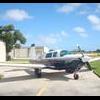
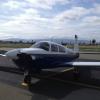


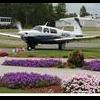


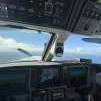
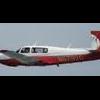

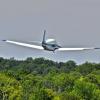
.thumb.png.7c67574d7b28f67b0b4a17760919b1ac.png)

